As Mexico’s 12th-largest state, Baja California has a diverse geography ranging from beaches to deserts and even dense forests. It also has a diverse range of reptiles, particularly its snakes. Around 25 unique species are known to live throughout the state. However, some of Baja California’s watersnakes are invasive and can even be destructive, which we’ll cover below. We’ll also touch on a few of Baja California’s native species. Read on to learn all about these invasive (and native) serpents, how to identify them, the kinds of habitats they frequent, and more.
1. Southern Watersnake (Nerodia fasciata)
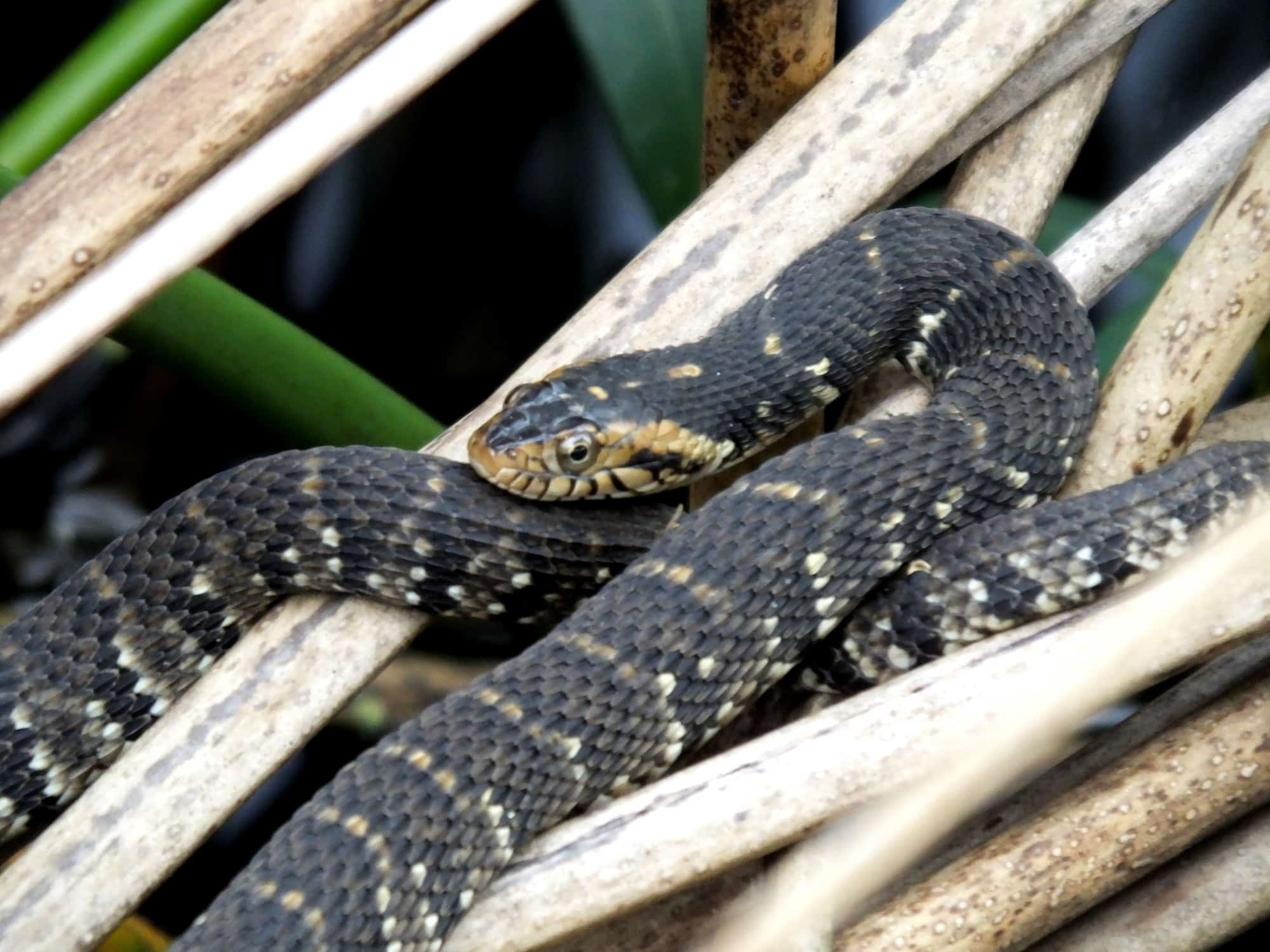
The Southern banded watersnake gets its common name from the many thin yellowish bands stretching across its body.
©iStock.com/passion4nature
The Southern watersnake is one of Southern California and Baja California’s most well-known invasive species. It is originally native to the central and southeastern United States. Three total subspecies exist, with the primary invasive variety in the area being the Florida subspecies, Nerodia fasciata pictiventris.
As far as its appearance goes, the southern watersnake can vary from grayish green to dark brown. Its body is marked by many thin, horizontal bands that can vary in color from beige to white to yellow and even brown. Its ventral side (belly) is typically a white or yellowish color. As a sexually dimorphic species, females tend to be both longer and heavier than males.
Unfortunately, This invasive species has significantly impacted Baja California’s native wildlife. As a generalized predator, its diet is highly varied. It commonly eats anything from worms and birds to fish, amphibians, turtles, and even smaller snakes. Notably, it also reproduces very quickly and tolerates fresh and brackish water. It commonly outcompetes other native snakes and reptiles for both food and shelter.
Although this species is non-venomous, it is capable of emitting a foul substance from its anal glands to ward off potential predators. Additionally, it is often confused with the cottonmouth snake due to its similar appearance.
2. Northern/Common Watersnake (Nerodia sipedon)
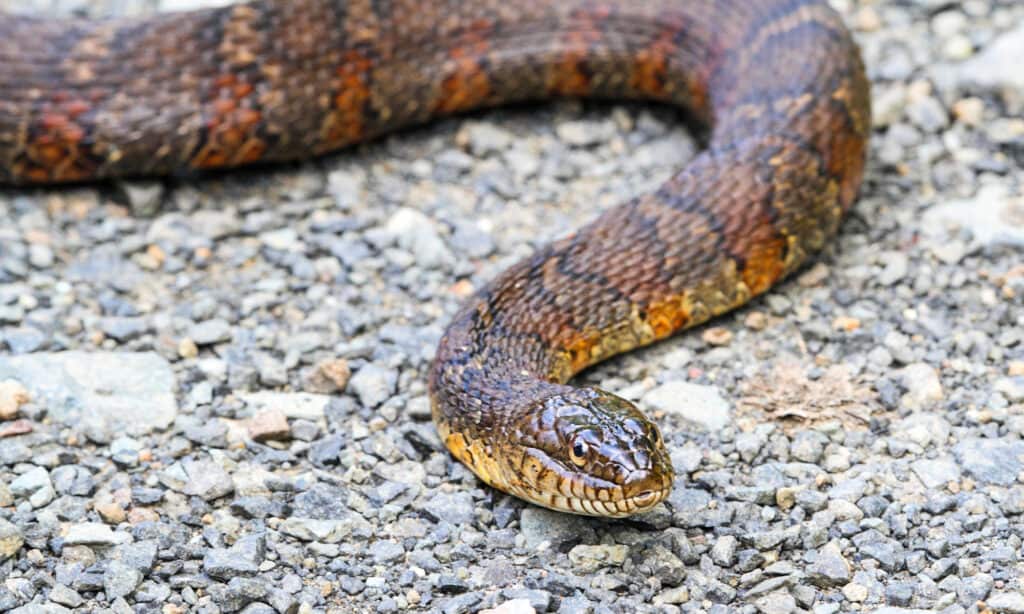
Northern watersnakes threaten Baja California’s native snakes, fish, and amphibians.
©Steve Byland/Shutterstock.com
The other notable invasive species in Baja California (as well as much of the US state of California) is the Northern watersnake, also known as the common watersnake. Although it is also non-venomous, it is commonly confused with the venomous cottonmouth. It is native to the eastern United States, but it was found to be introduced to southern California and northern Mexico in 2007.
This species is an average-sized snake ranging from 2.5 to 4 feet long. Like the southern watersnake above, it is sexually dimorphic, with males slightly smaller and more lightweight than females. Its body color ranges from dark brown to gray or reddish brown, with dark bands across the neck and splotches across the rest of its body and tail. Meanwhile, its belly, or ventral side, is much lighter and ranges from off-white to yellow to gray, often with darker crescent-shaped markings.
Like the southern watersnake, the northern watersnake has also significantly impacted California and Mexico’s native species, most notably the giant garter snake. It is capable of outcompeting this species for resources like food and shelter. As a skilled predator, it also has been known to feed upon many native fish and amphibian species.
To combat the impact of this invasive species, the US state of California made it illegal to import northern watersnakes without a permit in 2008. This is because they were likely introduced to the area (as well as Baja California in Mexico) by exotic pet owners releasing their snakes into the wild.
Other Notable Native Snakes in Baja California
In addition to the above invasive species, Baja California is also home to more than 20 other unique species of native snakes. Below are three of the most notable varieties you should know!
1. Baja California Rat Snake (Bogertophis rosaliae)
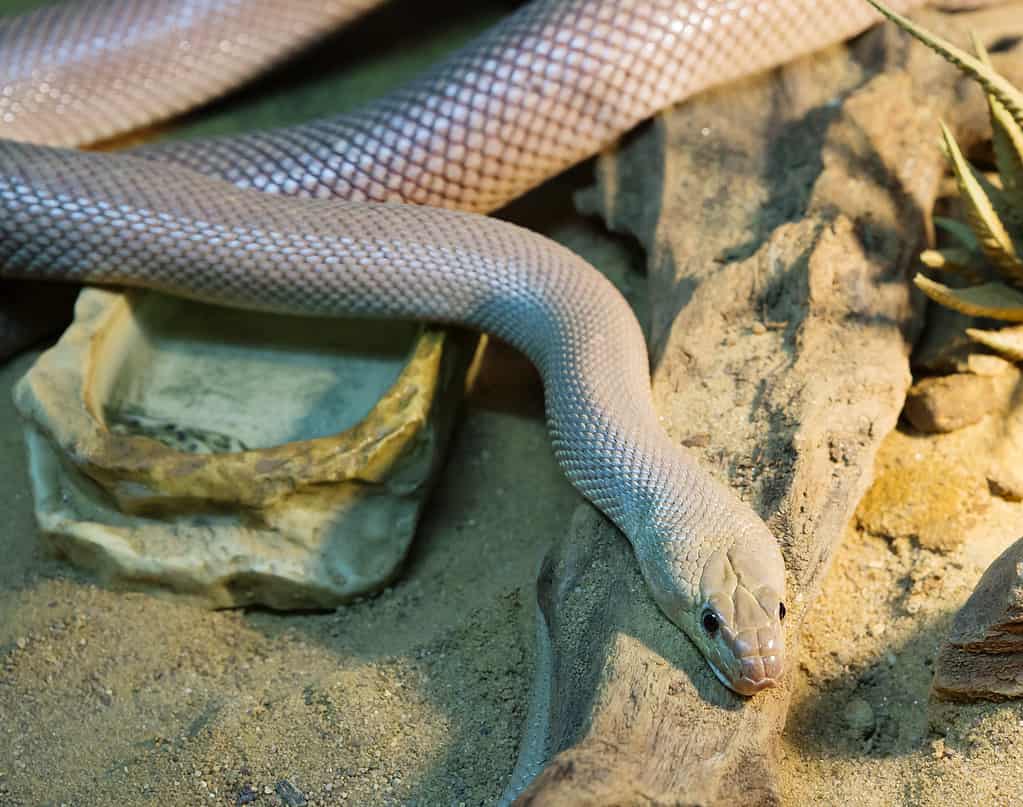
This rare, reclusive snake is still essentially a mystery to herpetologists. It is native only to Baja California and southern California in the US.
©iStock.com/User10095428_393
Native to Baja California and southern California, this species is quite reclusive, with little about it being known to herpetologists. It mainly inhabits desert habitats and mesas. In the US state of California, it is protected as a species of “special concern.”
This long, reasonably slender snake has a distinctly solid reddish brown body color, while its belly (ventral side) is typically a pale yellowish green. It averages 30 to 60 inches in length.
Though it is classified as a rat snake within its own unique genus taxonomically, experts still know little about its diet and behavior. More research will be needed in the coming years to understand the nature of its lifestyle better.
2. Desert Rosy Boa (Lichanura trivirgata)
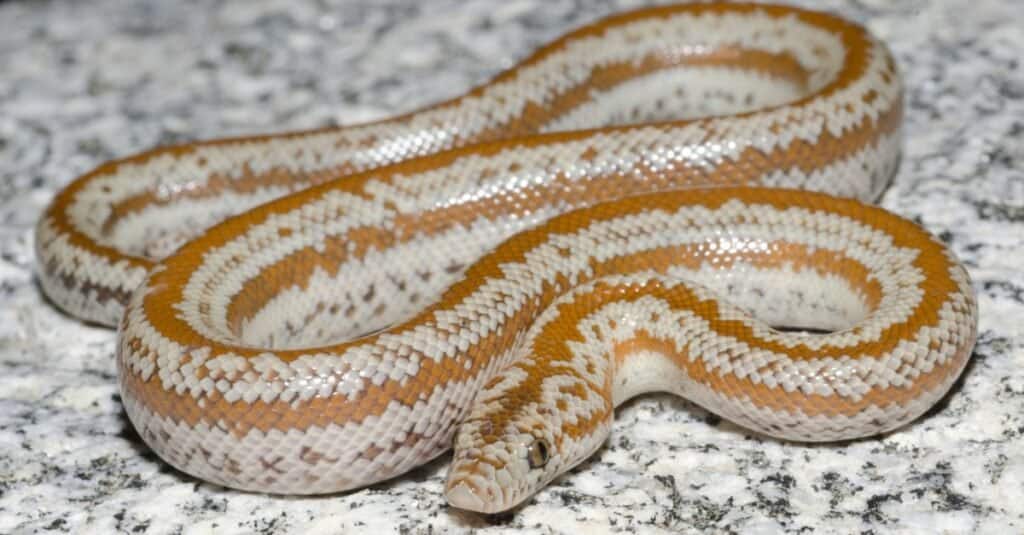
These snakes vary significantly in color, though they are universally harmless to humans and relatively reclusive and mild-mannered.
©Jason Mintzer/Shutterstock.com
The desert rosy boa also has a minimal geographic range. It is native only to southern California in the US and the Mexican states of Sonora and Baja California. It was initially described in 1861 by American zoologist Edward Drinker Cope. Its taxonomic status is still a topic of heavy debate amongst herpetologists. Currently, it belongs to the Lichanura genus of rosy boas.
This species is relatively small, ranging from 15 to 40 inches long. Its four subspecies mainly vary by body length. It’s also reasonably slender, with a diameter of about 1.5 to 2 inches. Its body coloration differs significantly from individual to individual, with most having a distinctive rosy pinkish or salmon-colored belly accented by small, irregular brown spots. The dorsal side generally has three stripes running lengthwise down the body. These stripes also are highly variable, ranging from orange to brown to black.
3. Baja California Rattlesnake (Crotalus enyo)
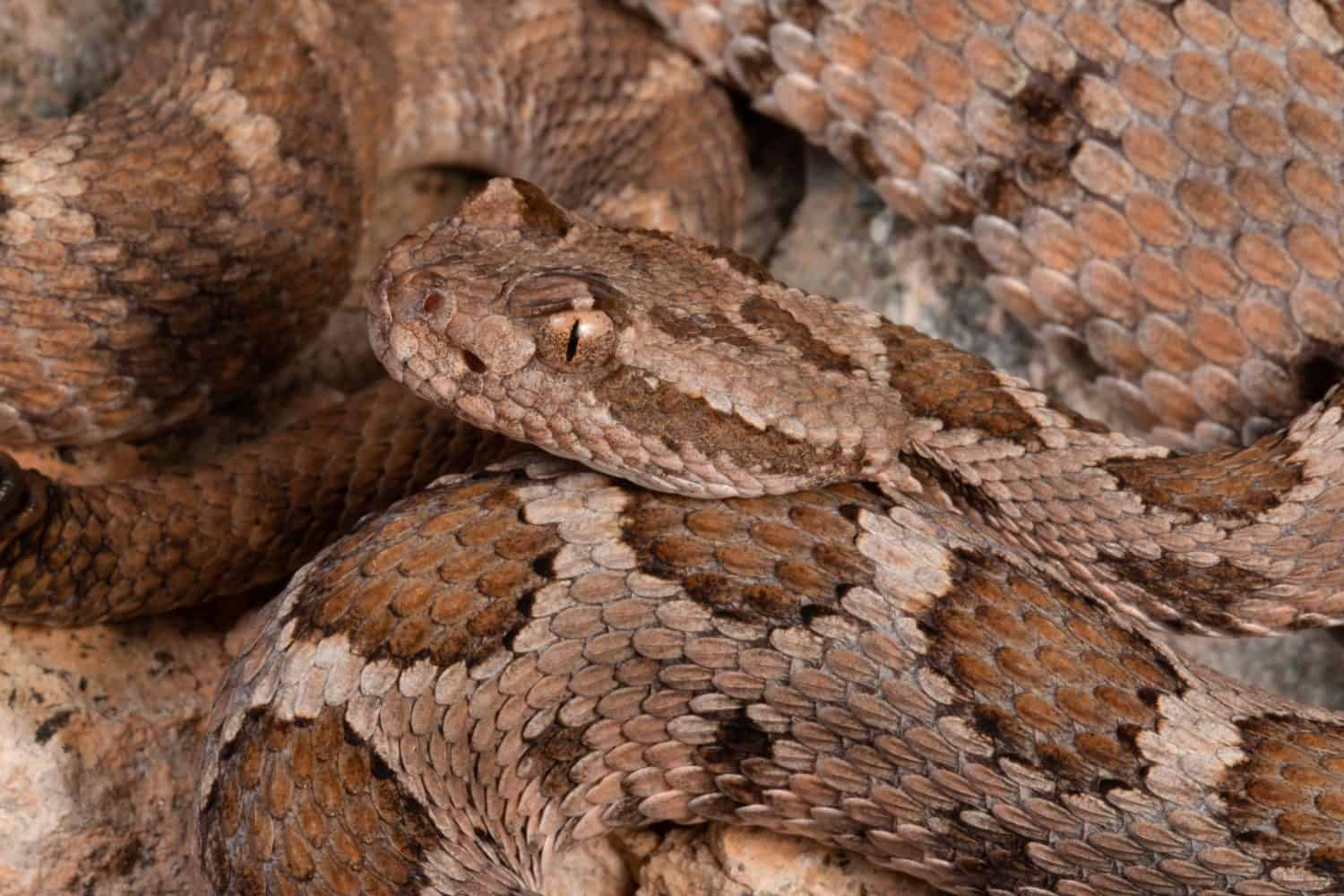
This species is notable for its small head and large eyes compared to other varieties of pit vipers.
©Nathan A Shepard/Shutterstock.com
As its name implies, the Baja California rattlesnake is primarily native to northwestern Mexico. As a species of pit viper in the Crotalus genus, it is highly venomous. It averages 30 to 40 inches in length and has three total subspecies.
Unlike some of the other sexually dimorphic invasive snakes we’ve explored here, males of the native Baja California rattlesnake tend to be larger and heavier than females. It is a light beige to off-white with light to dark brown triangular or diamond-shaped spots along its back. Its head is relatively small compared to most other pit vipers, though its eyes are comparatively huge.
The IUCN Red List currently classifies this species as “least concern” due to its widespread range and healthy population. It primarily inhabits desert habitats, though it can sometimes be found in shrublands.
The photo featured at the top of this post is © iStock.com/passion4nature
Discover the "Monster" Snake 5X Bigger than an Anaconda
Every day A-Z Animals sends out some of the most incredible facts in the world from our free newsletter. Want to discover the 10 most beautiful snakes in the world, a "snake island" where you're never more than 3 feet from danger, or a "monster" snake 5X larger than an anaconda? Then sign up right now and you'll start receiving our daily newsletter absolutely free.
Thank you for reading! Have some feedback for us? Contact the AZ Animals editorial team.







